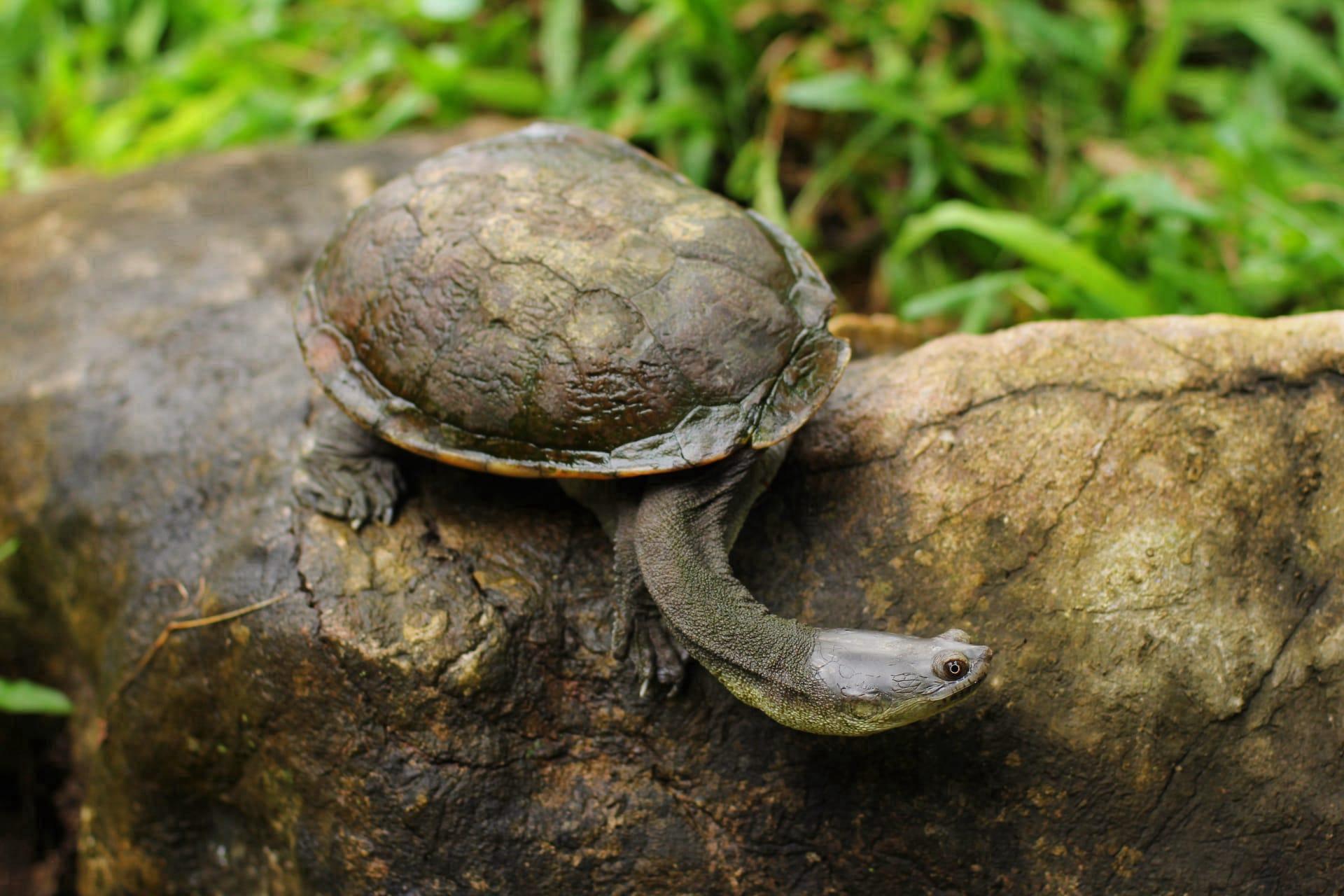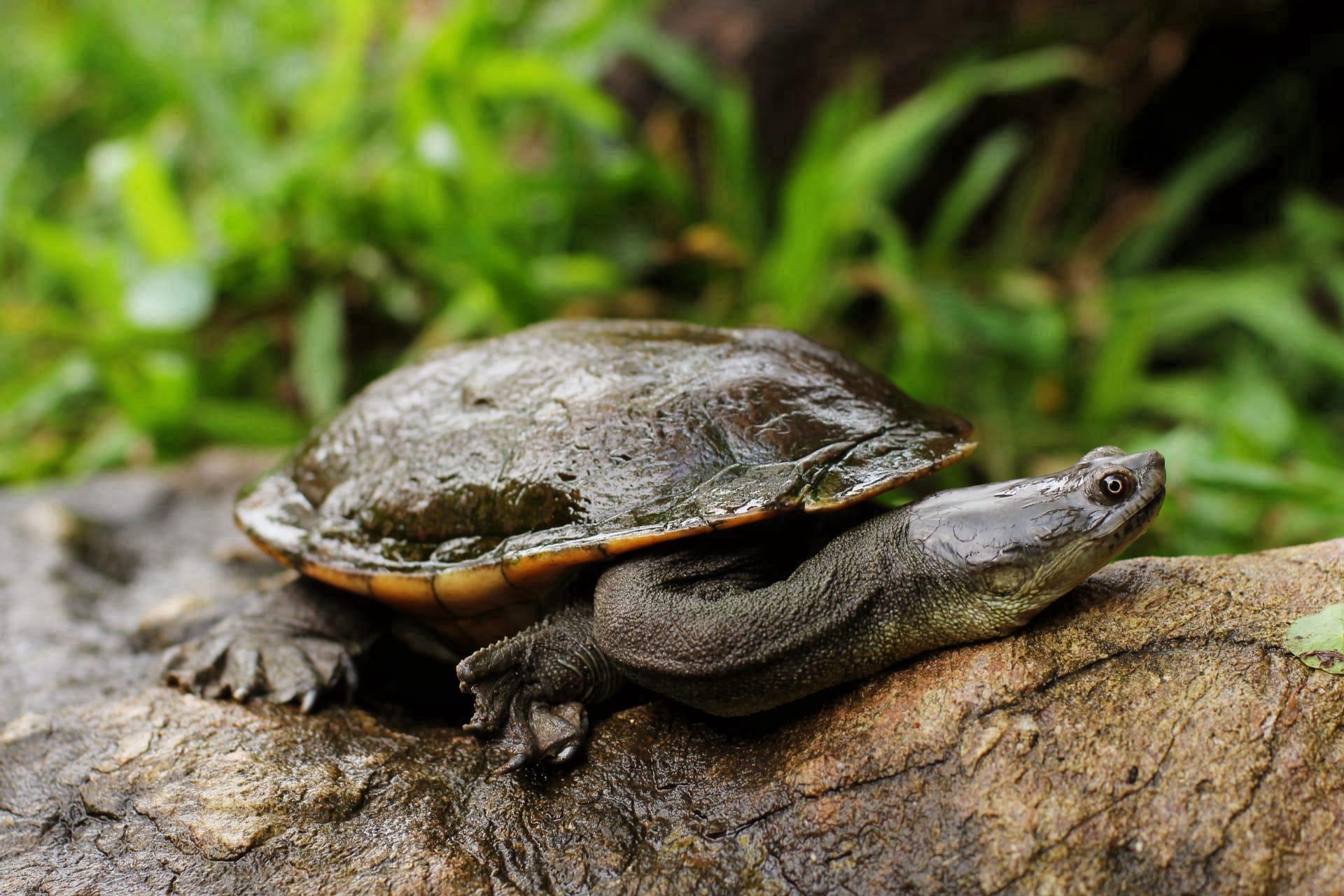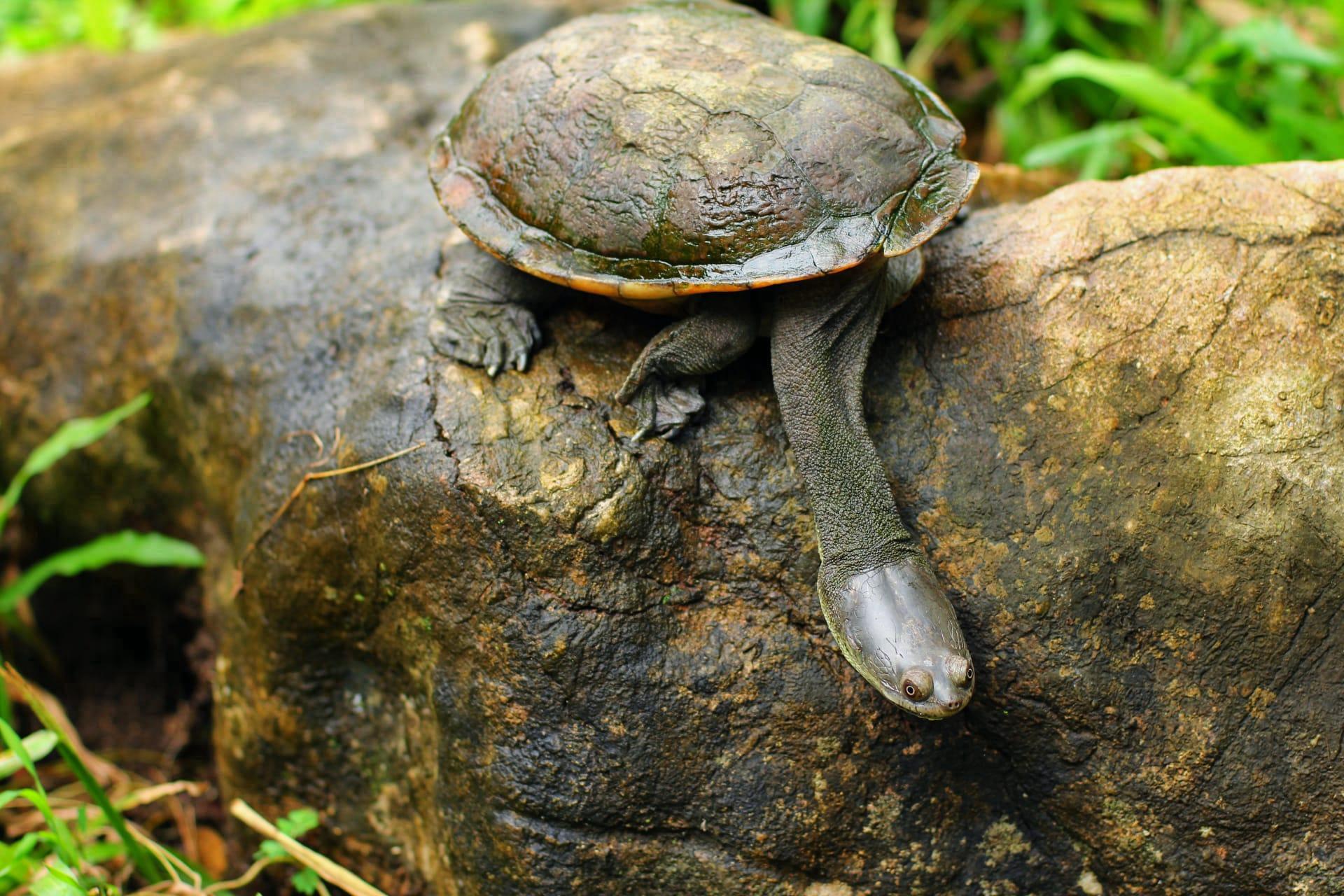1
Snake Necked Turtles, a distinctive group of turtles known for their elongated necks, present a fascinating aspect of nature's design. Their necks can be as long as their shell, sometimes even longer, providing them with a unique advantage in capturing prey. For instance, the Eastern Long-necked Turtle, a species of this group, has a neck that can reach about half its shell length, which is typically around 10 inches (25 cm). This adaptation allows them to swiftly strike at prey from a distance, making them efficient hunters in aquatic environments.
Another intriguing fact about these turtles is their feeding strategy. Unlike many other turtles, Snake Necked Turtles prefer to hunt and eat live prey, including fish, tadpoles, and small crustaceans. They use their sharp, pointed beaks to skillfully catch and eat their prey. This hunting method is quite a spectacle, as they can rapidly extend their necks to snatch unsuspecting prey, demonstrating remarkable agility and precision in water.

2
Snake Necked Turtles also exhibit a unique defensive behavior. When threatened, some species, like the Eastern Long-necked Turtle, will emit a foul-smelling fluid from their musk glands. This odorous substance is highly effective in deterring predators, making it a vital survival mechanism. The pungent smell can be detected from a considerable distance, serving as a warning signal to potential threats.
Additionally, these turtles have a peculiar way of basking. Unlike many other turtle species that bask in the sun with their limbs and heads extended, Snake Necked Turtles often bask while floating in water. They expose only their back to the sun, keeping their long neck and limbs submerged. This behavior not only aids in thermoregulation but also keeps them ready to dive underwater quickly at any sign of danger, ensuring a swift escape from predators.

3
Regarding their habitat, Snake Necked Turtles are predominantly found in freshwater environments, such as rivers, ponds, and swamps. These habitats provide them with abundant prey and suitable conditions for their survival. For example, the New Guinea Snake-necked Turtle thrives in the slow-moving waters of rivers and swamps, where it can easily hunt for prey in the murky waters.
Their reproductive process is equally fascinating. Female Snake Necked Turtles lay eggs on land, often traveling considerable distances from their aquatic habitats to find suitable nesting sites. They can lay between 4 to 20 eggs, depending on the species. Interestingly, the temperature of the nest can determine the sex of the hatchlings - a phenomenon known as temperature-dependent sex determination. Warmer temperatures typically result in female hatchlings, while cooler temperatures lead to male hatchlings.

4
Snake Necked Turtles are known for their longevity, with many species living up to 30 years or more in the wild. In captivity, with proper care, they can live even longer. This long lifespan requires them to have adaptable survival strategies, including flexible diets and the ability to thrive in various environmental conditions.
Another interesting aspect of these turtles is their method of communication. While they are not known for being particularly vocal, they do use body language and physical interactions to communicate, especially during mating rituals. Males often engage in specific movements like head bobbing or limb stretching to attract females, indicating a complex set of behaviors for social interaction and reproduction.

5
Snake Necked Turtles have a varied diet that reflects their opportunistic feeding habits. While primarily carnivorous, feeding on fish, insects, and crustaceans, some species also consume aquatic plants, making them omnivorous. This diverse diet is crucial for their survival, as it allows them to adapt to different food availabilities in their habitat.
These turtles play a significant role in their ecosystem. By preying on various aquatic organisms, they help maintain the balance in their habitats. Their preference for live prey makes them effective in controlling populations of certain species, preventing overpopulation and ensuring a healthy aquatic environment. Furthermore, their eggs and hatchlings serve as a food source for other animals, highlighting their integral role in the food chain.